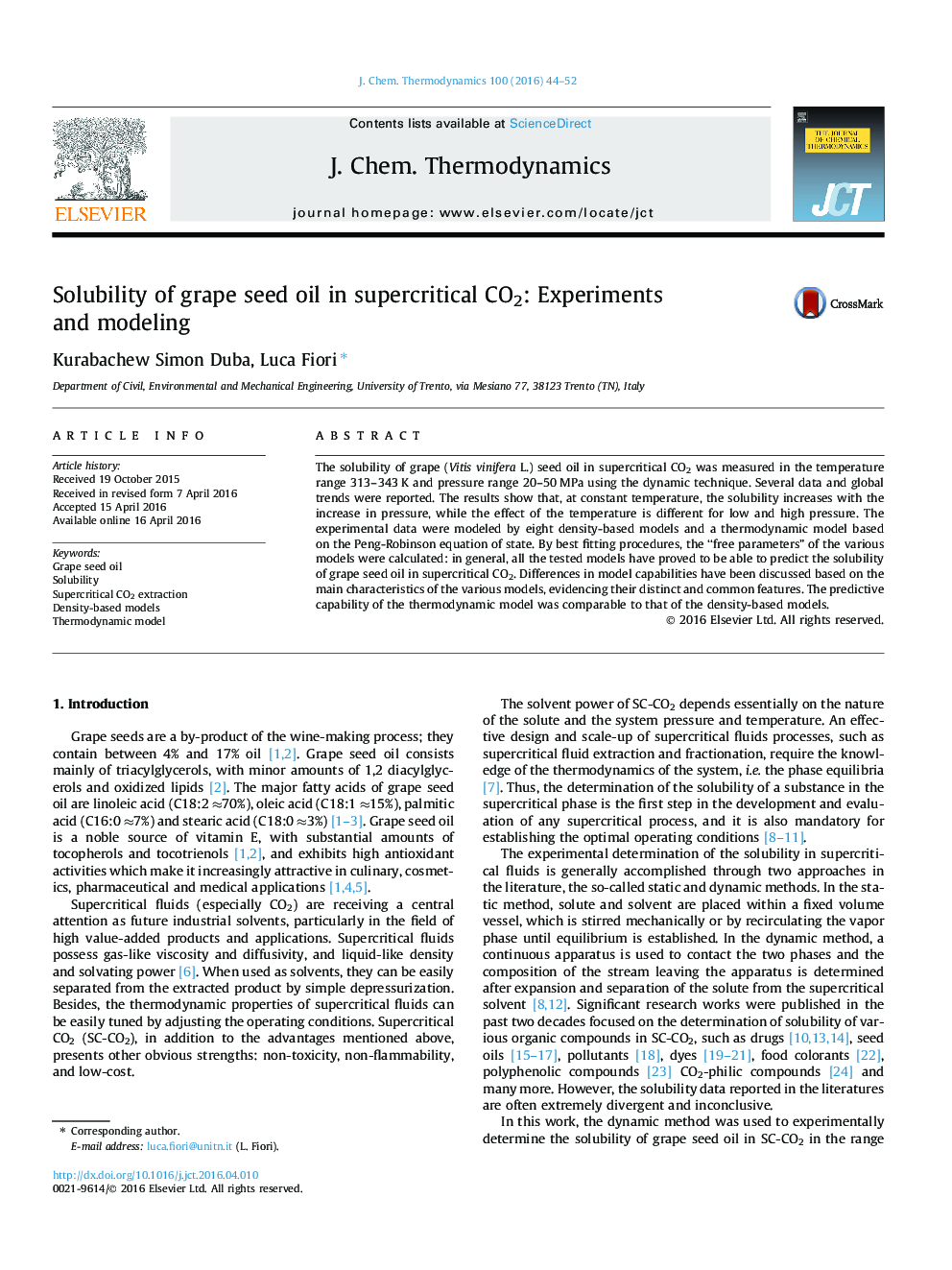| کد مقاله | کد نشریه | سال انتشار | مقاله انگلیسی | نسخه تمام متن |
|---|---|---|---|---|
| 214903 | 1426213 | 2016 | 9 صفحه PDF | دانلود رایگان |
کلمات کلیدی
1.مقدمه
2- بخش تجربی
2- 1- مواد، تجهیزات و روش استخراج
2- 2- روش تعیین حلالیت
3- مدلسازی
3- 1- مدلهای مبتنی بر تراکم
3- 2- مدل ترمودینامیکی
4- بحث و نتایج
4- 1- دادههای حلالیت
4- 2- همبستگی حلالیت
5- نتیجهگیری
• Solubility of grape seed oil in SC-CO2 for P: 20–50 MPa and T: 313–343 K.
• Experimental procedure: dynamic method and oil dispersed on the surface of glass beads.
• Eight density-based models and a thermodynamic model to fit the experimental data.
• All the models predict the solubility of grape seed oil in SC-CO2 to a reasonable degree.
• Models by Chrastil, del Valle and Aguilera, Kumar and Johnston, and the thermodynamic model are preferable.
The solubility of grape (Vitis vinifera L.) seed oil in supercritical CO2 was measured in the temperature range 313–343 K and pressure range 20–50 MPa using the dynamic technique. Several data and global trends were reported. The results show that, at constant temperature, the solubility increases with the increase in pressure, while the effect of the temperature is different for low and high pressure. The experimental data were modeled by eight density-based models and a thermodynamic model based on the Peng-Robinson equation of state. By best fitting procedures, the “free parameters” of the various models were calculated: in general, all the tested models have proved to be able to predict the solubility of grape seed oil in supercritical CO2. Differences in model capabilities have been discussed based on the main characteristics of the various models, evidencing their distinct and common features. The predictive capability of the thermodynamic model was comparable to that of the density-based models.
Journal: The Journal of Chemical Thermodynamics - Volume 100, September 2016, Pages 44–52
